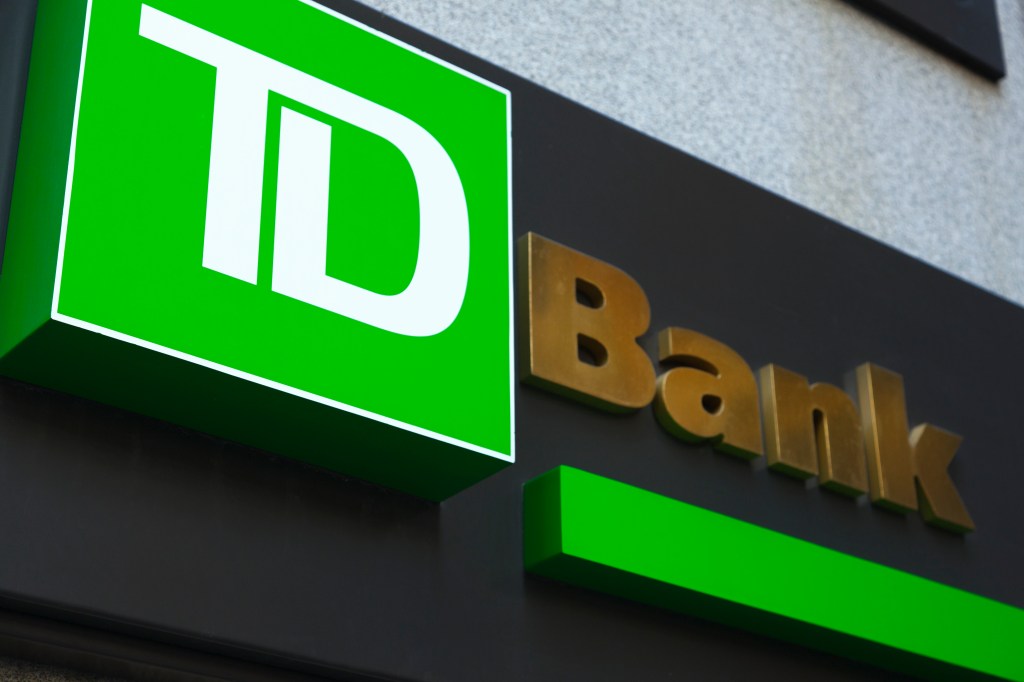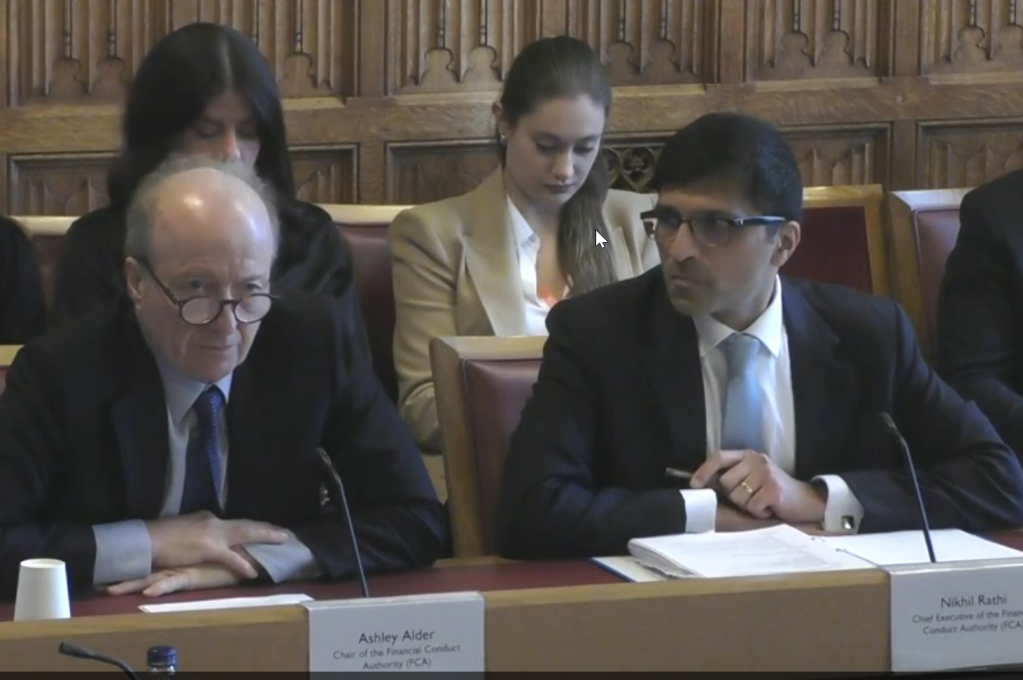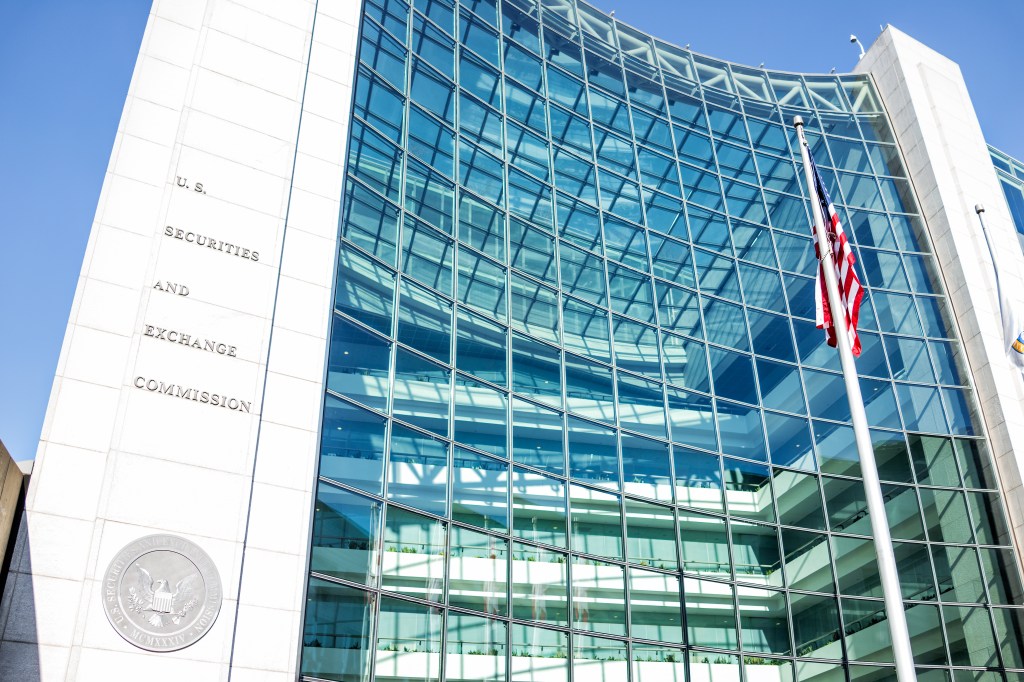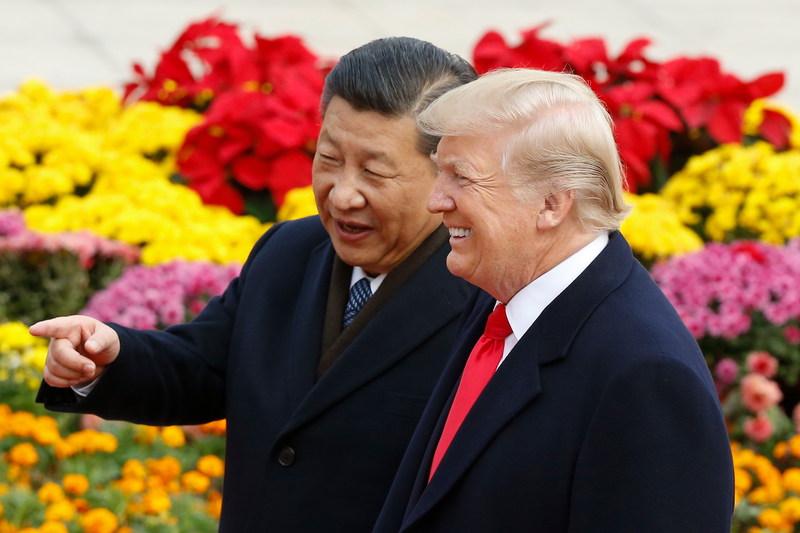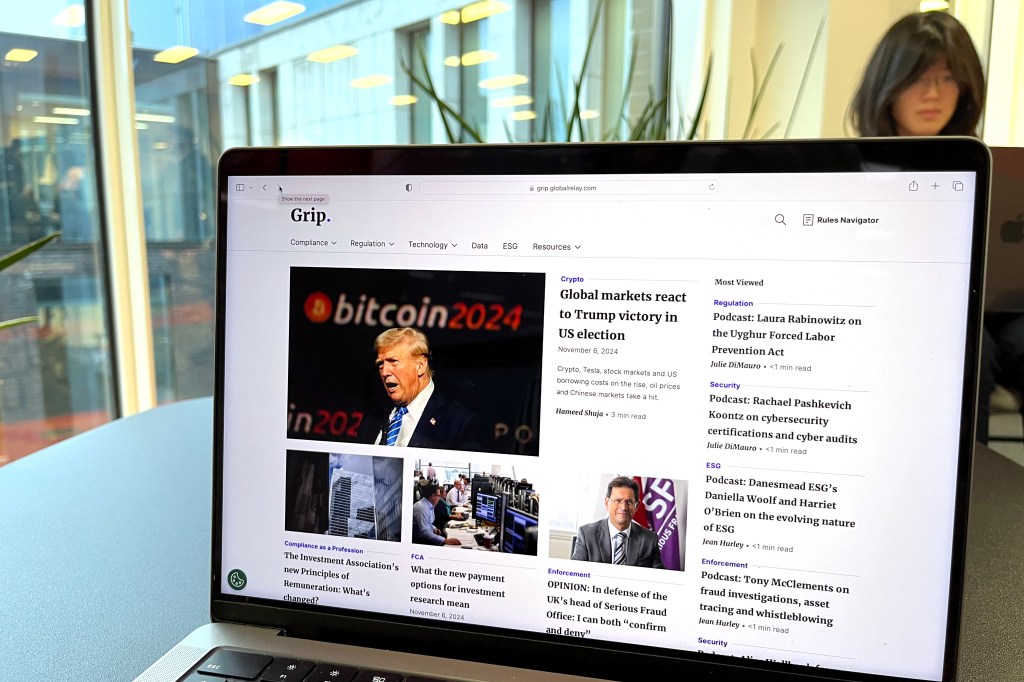Leigh-Anne Moore was drawn to the crypto industry by the transformational potential of crypto technology. She now heads two UK regulatory working groups for industry bodies and delivers training for various clients.
How did you get involved in crypto?
My background is in risk and regulatory compliance. I started to get involved on the crypto and digital asset side about three or four years ago, which seems a long time ago – things move quickly in the crypto space.
Initially, my focus was on AML and financial crime, and awareness around those risks. But that has evolved into a much broader perspective, particularly over the last 18 months.
Currently, I consult with a number of crypto firms on their money laundering regulation applications and help them build out robust AML and governance frameworks. So I’m leveraging a lot of my background in traditional finance into the crypto space. I also chair a UK regulatory working group for Crypto UK, one of the leading industry bodies in this space. At the moment we are focused on Travel Rule implementation and the extension of the Financial Promotions regime to crypto assets.
I’m also involved in numerous training initiatives, mostly around general awareness, looking at opportunities and risks, and also specific training like upskilling Money Laundering Reporting Officers (MLROs), which is a core function within crypto firms.
Did you fall into crypto or did you have a specific interest in it?
What got me into it was the real transformational impact of blockchain technology. That’s what initially got me interested in the digital asset space and still keeps me interested in it. Blockchain and crypto will significantly reshape financial services.
In 2022 British Prime Minister Rishi Sunak spoke about making the UK a crypto hub. In the US there’s been so much back and forth about regulation and there are all these battles going on with the big exchanges and the regulator. Where are we at right now in the UK given it’s quite a different context?
Firstly, around the government’s vision of the UK becoming a global hub. There was a report published recently by the Crypto and Digital Assets All Party Parliamentary Group (APPG) headed by Dr Lisa Cameron. It’s an interesting report. I recommend reading this because it talks about the unique position that the UK has in taking advantage of the growth in crypto and digital assets and the impact that would have in driving growth across the UK.
Clearly there are challenges to navigate. What is clear is that regulatory clarity is vital in addressing consumer risks, and re-establishing trust after the events of the past year, and also in harnessing the sector’s real potential. Adoption on the institutional side is still in its early days!
There’s a lot to work still to be done before the UK can establish itself as a digital hub. One of the biggest challenges currently is that many digital asset firms still do not have access to basic financial services.
We are increasingly seeing more regulatory developments in the UK but understandably it will take time. If you look at what’s happening globally, potentially the UK is a little behind in the global race that’s on at the moment to deliver a clear, comprehensive regime for digital assets.
We’ve seen a number of positive developments, which help to foster innovation, the launch of the permanent digital sandbox, for example. But on the flip side, the number of UK firms under the MLR regime is low, currently only 43.
There needs to be a more joined-up approach with government departments and agencies. It was confusing to see a recent Treasury Select Committee report saying crypto should be regulated as gambling rather than financial services, when the clear message from regulators has been same risks, same regulatory outcomes as financial services. Certainly the approach being taken in the UK is to take existing regulation and ‘tweak’ for the nuances of crypto rather than adopt a new regime as with MiCA in Europe or VARA in UAE.
There’s a lot of work still to be done before the UK can establish itself as a digital hub. One of the biggest challenges currently is that many digital asset firms still do not have access to basic financial services. A lot of high street banks refuse to provide bank accounts to firms which are licensed or regulated in the UK. We’ve also seen widespread limits or prohibitions on transactions to and from crypto exchanges. That situation needs to change if we are to move forward.
To keep up with global developments, what kind of time scale are we looking at? How quickly does the FCA need to act and implement regulation?
What’s interesting is the UK is very much going down this route of a phased or a piecemeal approach, and adapting regulations for crypto. Currently the FCA has oversight of UK crypto asset firms who have gone through the MLR regime, which essentially is focused on the effectiveness of their money laundering and terrorist financing procedures.
However, as mentioned, there’s only a small number of firms who’ve been approved under that regime in the UK, around 15% of applications. The standard is very high in the UK, which is good, but equally, we need to see more firms falling under that regime.
Looking forward, HM Treasury recently published a roadmap which sets out at a very broad level what the regulatory framework is going to look like and focuses on two aspects. One is having a very tailored approach for fiat-backed stable coins, which is their immediate priority. And then a separate activity-based regime to bring crypto into the core UK regulatory perimeter – made possible by the recent Financial Services and Markets Act which classifies crypto as a regulated financial activity.
Since then we have seen an extension of the financial promotions regime to crypto, primarily bringing the marketing of crypto assets in line with other high-risk investments to ensure consumer protection.
Why do you think banks are wanting to steer clear of crypto? Is it because of any negative connotations that it could have for them?
It’s to do with risk appetite. Crypto is seen to be a high-risk asset, for good reasons. High street banks would need to spend significant resources upskilling staff to understand those risks and develop their risk frameworks in order to put in place effective policies and procedures to identify, mitigate, and monitor those risks. I’ve consulted with a fintech bank who do onboard crypto clients, its definitely possible, but it’s an extension of the current controls framework. As the regulatory regime gets more clarity, hopefully there will be more appetite from high street banks.
What are the biggest risks for a bank aligning with crypto or integrating crypto services?
The current focus tends to be around money laundering and terrorist financing. Certainly, there’s a whole new suite of operational procedures that are needed in order to monitor money laundering across the blockchain versus traditional finance. Potentially there could be a gap there in experience, a gap in knowledge, and I guess reluctance to to make those operational changes.
One of the myths you have with crypto is that all crypto is money laundering. We know that’s not the case, money laundering impacts the whole of financial services and is certainly not exclusively crypto.
One of the myths you have with crypto is that all crypto is money laundering. We know that’s not the case, money laundering impacts the whole of financial services and is certainly not exclusively crypto. We regularly see AML failings across the banking sector. In fact, the percentage of illicit funds across crypto is very low compared to what you see in fiat.
I’ve heard people in all sectors over the last few years talk about how their companies were trying to integrate blockchain and it was the thing of the moment and then it fell out of favour. Do you think people see a big distinction between blockchain and crypto, with blockchain being viewed more positively and having more use cases?
People tend to focus on bitcoin and the volatility of bitcoin, and there seems to be less focus on the technology behind bitcoin and the very positive impacts that blockchain has. We are starting to see an increase in adoption on the institutional side. We will see more adoption across banking in general because there are so many benefits of blockchain technology. For example cross border payments is a game changer in terms of the transaction speeds and the low transaction costs.
Regarding myth busting and shedding crypto in a more positive light, how can that happen? Is it up to the crypto firms themselves to come out and run more training or programs or go out there and educate people? Who’s responsible for improving the image of cryptocurrency?
It’s a bit of both. There are some great examples and use cases of crypto, particularly in the ESG space, particularly on the social and governance side. We’ve seen that recently with the use of crypto in supporting relief efforts in Ukraine. The traditional finance system would’ve taken days, but leveraging the benefits of crypto, meant transfers happened very, very quickly, and interestingly many suppliers accepted crypto as payment, allowing vital supplies to be sent to the right place at the right time.
There are some great examples of how crypto has had a real benefit and we’re seeing it more and more in the institutional space. It does offer a diversification of products and services and appeal to a new client base. We’ve seen a lot of institutional players now looking at getting more involved on the custody, lending, and trading sides. There’s huge potential – and it’s still at its early stages. The finance system as we know it will look very different in 5-10 years time.
For smaller transactions like paying for a pizza or something similar, people have said it’s too slow and clunky and it doesn’t work, and the transaction fees are too high. Do you think that developers in the industry are working to rectify that?
I mean, it’s interesting that you chose pizza because that was of course the first purchase years back, 10,000 bitcoin for a pizza. Again, it’s in the early stages of mainstream adoption. I think as the payment rails and the regulatory framework develops and gains more clarity, we will see more widespread use cases.
There are some jurisdictions where it’s used quite effectively as a payments mechanism. It’s a difficult one because in the UK we obviously have faster payments so there’s a question mark over the advantage in terms of speed or cost of using crypto assets. But certainly when you are looking at transacting across borders, that’s where you see the real benefit.
What about the criticisms of the technology and the environmental costs of mining?
Again, this is where the narrative needs to be more balanced, some of the views that get circulated are quite outdated. So one of the myths out there is that mining is very environmentally unfriendly. But actually there have been a lot of changes to the way that bitcoin is mined, and a lot of sustainable energy sources are now being used.
This is an industry where things move very, very quickly, the technology moves fast and methods can change. So there are a lot of positive use cases that we can draw on in the ESG space.
Do you think younger generations are already using crypto in a more day-to-day way?
Yes, we have seen greater adoption across younger generations in the retail space. Unfortunately there have been people who have lost money due to scams. There needs to be more in the consumer protection space, and change is certainly coming.
The marketing of crypto assets now falls within the financial promotions regime and there’s been a consultation paper in the last week or so on social media. So there’s a lot of positive developments in the pipeline.
Investment funds and Asset Management firms are increasingly seeing the popularity of crypto as a mechanism to reach out to a new, maybe younger, client base.
All these online scams where you see celebrities “shilling” coins. That’s obviously really damaged the industry. Are regulators doing enough to stop that?
It has damaged trust in the industry as have the large scale failures of last year! I’ve mentioned the new pieces of regulation coming very, very shortly. The financial promotions regime is being implemented by early October and will certainly address some of the dubious marketing , and celebrity endorsements.
There have been some horrible scams. People have lost life savings. But bad actors exist in all areas of financial services. This is not exclusively crypto, there are a lot of investment scams in the fiat world.
There are over 20,000 coins in the crypto space but not all of these have a use or utility. As an industry, we need to make sure people fully understand the opportunities and the risks so they are better equipped to make those investment decisions.
There is more to be done on the educational side across financial services in general to better educate individuals so they can be more aware of bad actors and less likely to be captured by these sorts of investment scams.
Are there any figures on crypto being used for money laundering or fraud or, or purposes like that compared with conventional fiat money?
The figures are lower with crypto, as a percentage of flows. The blockchain is an immutable ledger. It’s permanent and can’t be changed so there is a record and as such there is a lot of transparency
One of the myths of crypto is that it’s completely anonymous, but actually it’s not anonymous, it’s pseudonymous. You can see exactly what has occurred over the blockchain. Yes there are techniques that can be used to obfuscate transactions, such as the use of mixers and tumblers, but it is becoming increasingly more difficult. If you’ve seen the power of blockchain analytics it’s really creating a very difficult space for money launderers to move money across the blockchain because of the transparency.
So where are we at now do you think, in terms of educating people and creating a more positive image of people and getting them to want to use it?
There are a lot of initiatives going on at the moment to build that awareness and really help people understand what are the opportunities, what are the risks.
With the upcoming regulation we will see more risk warnings and information that consumers should be aware of before investing, similar to what we see in the crowd investing space for example.
We are starting to see the narrative change, and some of these crypto myths being dispelled. I would like there to be more focus on the ‘positive’ use cases of crypto, and digital assets in general.


